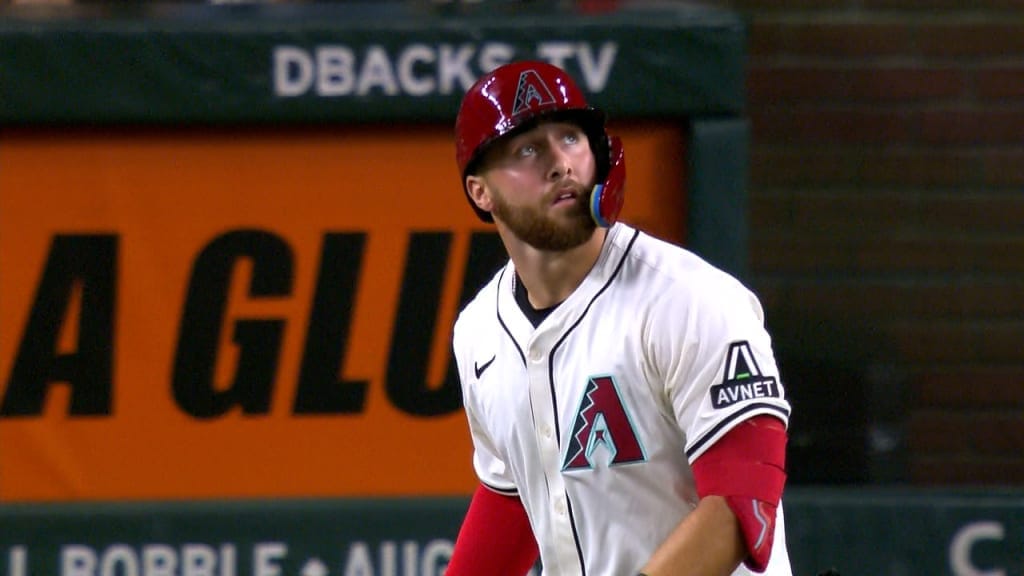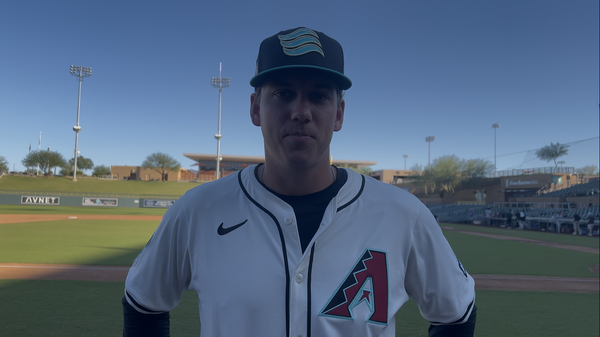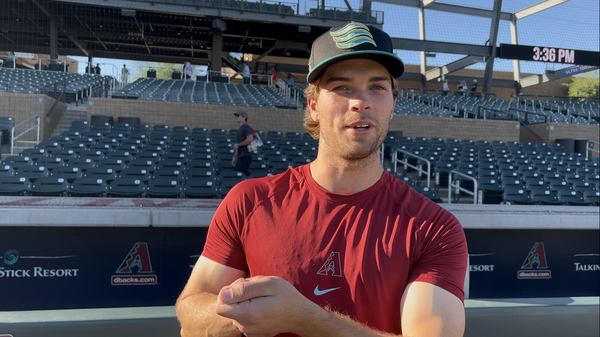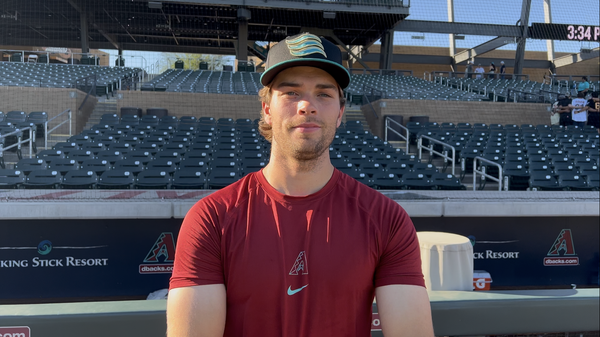Tyler Locklear’s Struggles Could Force the D-backs to Rethink First Base in 2026
It's been tough for Locklear to gain his footing at the major league level. He's putting up a rather pedestrian .191/.276/.279 slash with two home runs in 76 plate appearances since the trade.

The Diamondbacks will need to figure out what to do with Tyler Locklear soon. As the main centerpiece acquired in the Eugenio Suárez trade with the Mariners at the deadline, the idea was to give him a runway to playing time at first base. However, the return of Pavin Smith from an oblique injury and Locklear's struggles at the plate have forced a change in approach with the lineup.
It's been tough for Locklear to gain his footing at the major league level. He's putting up a rather pedestrian .191/.276/.279 slash with two home runs in 76 plate appearances since the trade. FanGraphs estimates his offensive productivity to be 41% less than the league-average hitter with a 59 wRC+. That may force the team to seek alternative options for first base in 2026.
Breaking Down Tyler Locklear's Struggles at the Plate
Locklear's struggles are based on a very small sample size of 76 PA and 299 pitches seen. However, his struggles have been bad enough that they're already impacting lineup decisions and costing him playing time.
The obvious surface numbers would be more than enough to get him benched for Smith, but it goes beyond that. A 36.8% strikeout rate is far too high for a power-hitting first baseman. Compounding the issue, 62.5% of Locklear’s contact is on the ground, per Statcast, which further limits his offensive output. With a "plus" power tool, he needs to be hitting the ball in the air more frequently to be a more effective hitter.
One place to start looking when trying to anticipate decisions the D-backs could make is a hitter's expected stats. The expected numbers aren't too far apart from the organization's internal metrics, as general manager Mike Hazen once admitted. The expected metrics take into account a batted ball's exit velocity, launch angle, and, on certain types of contact, a batter's sprint speed. It can serve as a solid metric, as it minimizes the impact of the defense in the equation.
In his short sample, Locklear has a .167 xBA, .259 xSLG, and .236 xwOBA. Considering that José Herrera was DFA'd for a similar xwOBA (.240) this season, there is precedent that this lack of production will lead to roster decisions. However, Herrera had a longer track record of futility at the plate at the major league level compared to Locklear, so he's not in danger of being axed from the 40-man roster. It's more likely his active roster spot is more in jeopardy.
Looking at his at-bats, it seems like he's caught in between approaches and often surprised by fastballs in the strike zone. It doesn't help that he's lost a couple of walks to umpires giving him the rookie treatment, but that's out of his control. He hasn't done a good job of checking off pitches out of the strike zone, with a 32.1% chase rate this season.
The lack of discipline at the plate has negatively affected both his contact and quality of contact rates. Locklear is sporting a whiff rate of 31.9%, which is exceptionally high and led to his astronomical strikeout rate. His hard-hit rate of 40.0% and barrel rate of 5.0% are low for the type of hitter the D-backs ultimately need him to be. The expectation is that Locklear will develop into a 25-30 home run bat in the middle of the order, so those are two key batted ball metrics to watch as he tries to become that type of hitter.
It's also affected his overall contact, as his xwOBA on contact is a mere .309. That's more than 100 points less than Smith's .422 and 18 points less than Adrian Del Castillo's .333. While Smith has the same drawback of a high strikeout rate (31.6%), the higher walk rate and more impact on contact make him a better option to play right now over Locklear against right-handed pitching.
D-backs' Decisions at First Base
In the five games since Smith returned from the injured list, it has been a strict platoon situation at first base. Smith has started against the three right-handed pitchers and Locklear against the two left-handed pitchers. Del Castillo has become the primary designated hitter against righties as well, while Ketel Marte is taken off the field to DH in favor of Ildemaro Vargas at second base.
With these changes in the lineup, Locklear has been effectively benched for two better-performing bats. The natural question to ask is whether the D-backs are better off with their current first base situation or if they should consider giving Locklear a mental reset in Triple-A. An optional assignment for a position player only carries a minimum of 10 days, instead of 15 for pitchers.
Locklear's struggles at the plate could lead to the team taking a different approach in the offseason as well. Committing to the left-handed-hitting Smith would require a platoon at first base, requiring the club to add a veteran right-handed bat to their bench to fill the role. That would also mean a potential DH platoon between Del Castillo and Blaze Alexander.
Regardless of the decisions they'll make with Locklear in the offseason, first base is one of three positions that should see significant changes over the course of the 2026 season.




